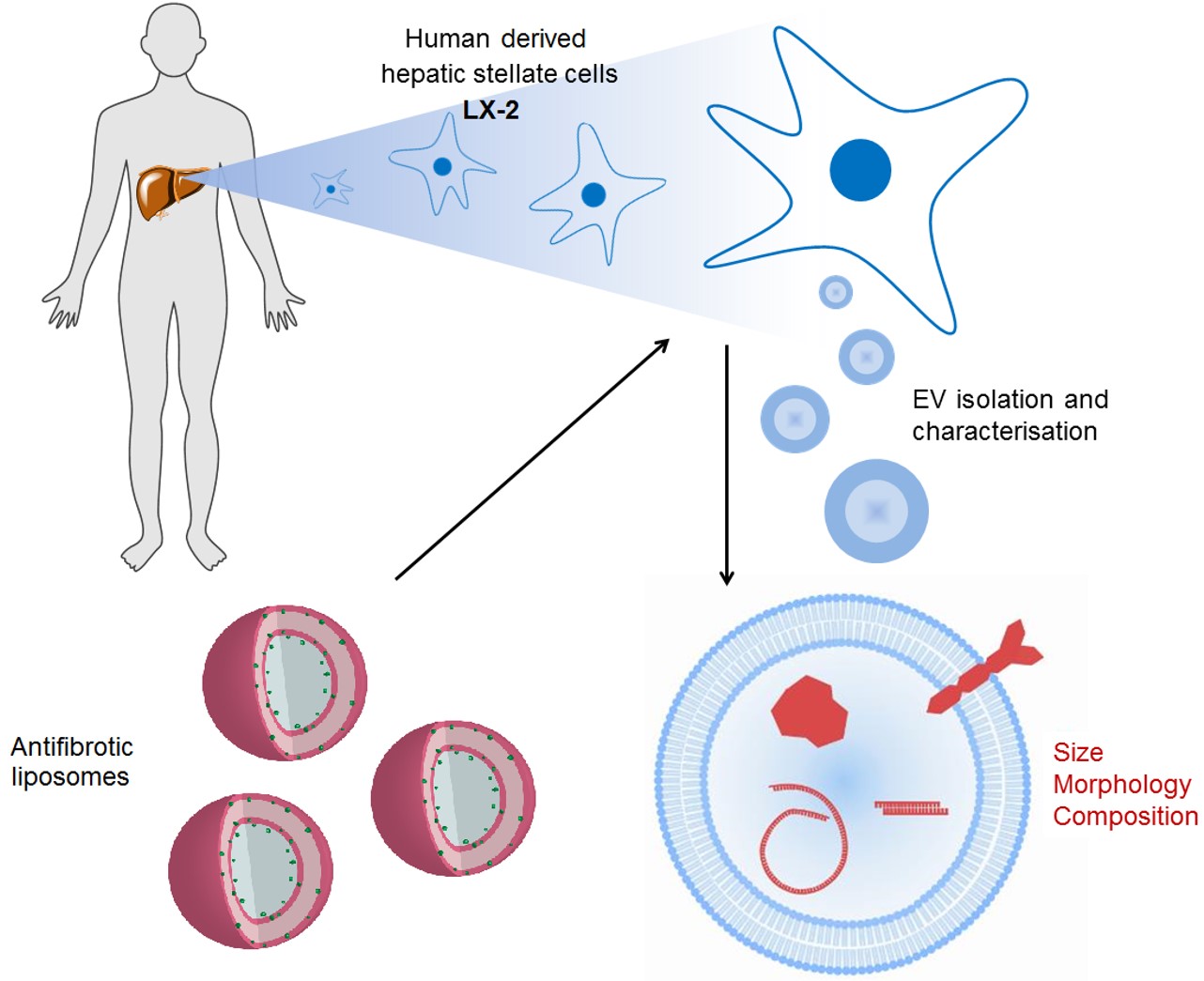Lipid-based therapeutics for liver fibrosis and their impact on extracellular vesicles
Prof. Dr. P. Luciani1), University Bern/Switzerland
People involved
Cristina Zivko (PhD fellow sponsored by the PRC) - University Bern, Switzerland (cristina.zivko@dcb.unibe.ch)
Prof. Dr. Gregor Fuhrmann
Abstract
Liver fibrosis is a reversible wound-healing response to repeated and chronic organ injury, characterized by the aberrant accumulation of extracellular matrix. Scar formation may ultimately lead to organ dysfunction, cirrhosis and hepatocarcinoma. The main profibrogenic cells of injured liver, hepatic stellate cells (HSC), following activation by specific stimuli, undergo phenotypical changes towards myofibroblasts and contribute to the deposition of collagen. To date no specific anti-fibrotic drug treatment is available, although the positive action of certain hepatoprotectors has been acknowledged. Essential phospholipids have been used since decades as a supportive therapy for liver diseases, but a complete picture of their mechanism of action still needs to be drawn. Among the different molecular mechanism involved in the progression of the disease, it has been suggested that extracellular vesicles (EVs) may play a pivotal intercellular role.1)2)
With the present research project, we aim at profiling EVs from a human immortalized HSC line, LX-2, and at investigating the impact of phospholipid-based anti-fibrotic treatments on EVs composition and release. The results of this study could pave new avenues towards non-invasive diagnostic tools for liver fibrosis that could help physicians in designing timely and personalized anti-fibrotic therapies at any stage of the diseases.

Schematic project overview. Extracellular vesicles from hepatic stellate cells are isolated and characterized physicochemically. Subsequently, anti-fibrotic liposomes are formulated and their impact on the exosome properties will be assessed in detail to determine their suitability for non-invasive diagnostics development.
Benefit for the community
Understanding the role of lipids and EVs in liver disease onset and progression will pave the way to develop novel treatment avenues for these devastating dispositions. Moreover, the development of an early detection technique with high sensitivity will allow timely therapy of affected patients. The successful execution of this project will help saving lives of affected patients, reduce healthcare costs and control the prevalence of liver diseases and thus have a major impact on both the healthcare system and the society.
Visit the supervisors lab
Cell-derived vesicles for drug therapy and diagnostics: opportunities and challenges
Nano Today 10, 397-409
| PubMed |
Synergy of phospholipid—drug formulations significantly deactivates profibrogenic human hepatic stellate cells
Pharmaceutics 11, 676
| PubMed |
Liver-derived extracellular vesicles: a cell by cell overview to isolation and characterization practices
Biochim. Biophys. Acta 129559
| PubMed |
Tracking matricellular protein SPARC in extracellular vesicles as a non-destructive method to evaluate lipid-based antifibrotic treatments
Commun Biol 5, 1155
| PubMed |
Formulating elafibranor and obeticholic acid with phospholipids decreases drug-induced association of SPARC to extracellular vesicles from LX-2 human hepatic stellate cells
Eur. J. Pharm. Biopharm., published online
| PubMed |


